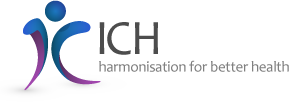 Since it was adopted in 1996, the Guideline for Good Clinical Practice ICH E6 (R1) – better known as “ICH-GCP” – has been the internationally harmonised foundation for the planning, conduct, and reporting of clinical trials of medicinal products. Now, almost 20 years later, the content of this fundamental set of regulations has been added to for the first time.
Since it was adopted in 1996, the Guideline for Good Clinical Practice ICH E6 (R1) – better known as “ICH-GCP” – has been the internationally harmonised foundation for the planning, conduct, and reporting of clinical trials of medicinal products. Now, almost 20 years later, the content of this fundamental set of regulations has been added to for the first time.
In June 2014, the ICH steering committee decided to update the guideline in order to better reflect technical advances in clinical research and the increasing complexity of clinical trials. It was decided to take an “integrated addendum” approach to the update – meaning that the existing text would not be altered, but rather new text would be added, providing additional clarification and new information.
The draft of this integrated addendum was available for comment by interested parties and organisations until February 2016.
The final version of the amended guideline, ICH E6 (R2), was published and presented to the respective authorities of the ICH regions on 9 November 2016 (Step 4). The EMA has already adopted this final text for the European Union and published it under the code EMA/CHMP/ICH/135/1995 (Step 5). The addendum came into effect on 14. June 2017.
ICH E6 (R2) contains relatively little new information for the investigator and the investigating site. The investigator’s role as the head of the study team with overall responsibility of the trial (investigator oversight) has been given even greater emphasis than before. The investigator must supervise their team and ensure that everyone on it is suitably qualified. Furthermore, there is now an increased emphasis on ensuring the quality of the source data, which is generally already an everyday requirement in clinical trials. This should make the work of clinical monitors somewhat easier.
With regard to eCRFs in particular, there is a focus on the requirement for the investigator to have access to and control of the data that they are reporting to the sponsor at all times. This is particularly relevant when it comes to purely web-based eCRFs, which so far only partially meet this requirement.
The majority of the additions in the addendum refer to the tasks of the sponsor. The addendum calls for a quality management system that uses risk management methods, and ensures that trial protocols and procedures are precise and not unnecessarily complex.
There are also new requirements for the SOPs that govern the handling of electronic data. One of the requirements is that they ensure that the systems being used have been validated. The term “certified copy” has also been added to the terminology, referring to a document that can replace the original document if necessary.
The risk-based and centralised monitoring procedures that the EMA and FDA had previously proposed have now been integrated into the regulations, and the monitoring plan (which is already commonly used) has now been made compulsory under ICH-GCP for the first time.
When outsourcing tasks to CROs, the sponsor must also meet their obligations as the party that has overall responsibility for the study at all times (sponsor oversight). This also applies to any tasks that the CROs may choose to outsource to subcontractors.
In the case of significant non-compliance, a root cause analysis is required, along with corrective and preventive action (CAPA).
How we can help:
The new requirements of the ICH-GCP integrated addendum are of course addressed in our training courses. This means that those who participate in our GCP training courses have all the information they need to get off to a good start with the implementation of ICH E6 (R2).


